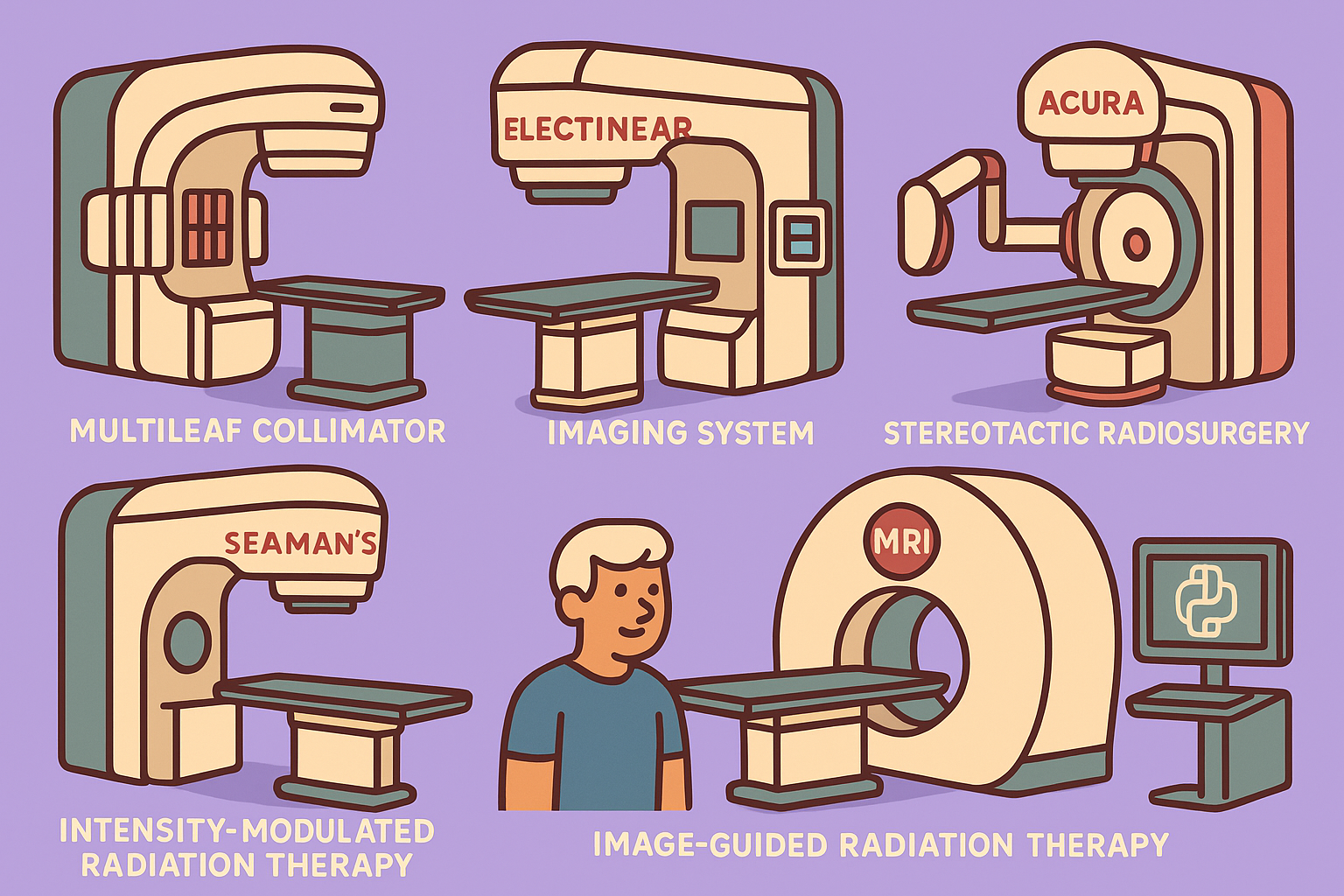In the fight against cancer, linear accelerators (often abbreviated as “linacs”) stand as foundational tools in radiation oncology. These sophisticated devices are engineered to produce high-energy X-rays or electrons, meticulously directed at tumors to destroy cancerous cells while carefully safeguarding surrounding healthy tissue. This article delves into the various types of linear accelerators and their specific applications, providing a clear understanding of their role in modern cancer treatment.
The Core Function of Linear Accelerators
At their heart, linear accelerators accelerate electrons to very high speeds. When these high-speed electrons strike a metallic target, they generate X-rays. Alternatively, the electrons themselves can be used for superficial treatments. The ability to precisely shape and direct these energy beams is what makes linacs indispensable in radiation therapy.
Diverse Types of Linear Accelerators and Their Applications
The landscape of linear accelerators is rich with different manufacturers and specialized systems, each offering unique capabilities for myriad treatment scenarios.
Varian Linear Accelerators
These machines are widely adopted in cancer treatment centers due to their extensive range of treatment options. Varian linacs support:
- Conventional Radiation Therapy
- Intensity Modulated Radiation Therapy (IMRT)
- Volumetric Modulated Arc Therapy (VMAT)
- Image-Guided Radiation Therapy (IGRT)
- Stereotactic Radiosurgery (SRS)
- Stereotactic Body Radiation Therapy (SBRT)
Their versatility makes them a popular and reliable choice for a broad spectrum of oncological cases.
Elekta Linear Accelerators
Known for their advanced features, Elekta linacs often incorporate state-of-the-art components such as multileaf collimators (MLCs) and cone-beam computed tomography (CBCT) systems. These features enable the delivery of advanced treatment techniques, including:
- Three-Dimensional Conformal Radiation Therapy (3D-CRT)
- Intensity Modulated Radiation Therapy (IMRT)
- Volumetric Modulated Arc Therapy (VMAT)
This flexibility allows for highly customized treatment plans tailored to individual patient needs.
Accuray Linear Accelerators (e.g., CyberKnife)
Accuray systems, particularly exemplified by the CyberKnife, are designed for highly precise, non-invasive treatments. They specialize in:
- Stereotactic Radiosurgery (SRS)
- Stereotactic Body Radiation Therapy (SBRT)
These linacs are renowned for their ability to deliver tightly focused radiation beams, which is critical for targeting small tumors with exceptional accuracy.
Siemens Linear Accelerators
Siemens linacs integrate advanced imaging and treatment delivery systems to enhance the precision of radiation therapy. This integration is crucial for ensuring that the radiation is accurately directed at the tumor, optimizing dose delivery and minimizing collateral damage.
MRI Linear Accelerators (MRI-Linacs)
Representing a significant leap forward, MRI-linacs combine linear acceleration technology with Magnetic Resonance Imaging (MRI). This powerful integration allows for:
- Real-time Imaging During Treatment: Clinicians can visualize the tumor and surrounding anatomy in real-time.
- Adaptive Treatment Planning: The ability to adapt treatment plans dynamically based on daily changes in tumor size, shape, and position.
This innovation offers unprecedented precision, especially for tumors affected by organ motion, such as those in the lung, liver, and prostate.
Key Treatment Modalities Enabled by Linear Accelerators
Beyond the specific types of machines, it’s important to understand the sophisticated treatment modalities they facilitate.
-
Intensity Modulated Radiation Therapy (IMRT): This technique customizes the intensity of radiation beams to precisely conform to the unique shape of the tumor. IMRT maximizes tumor coverage while significantly reducing exposure to adjacent healthy tissues.
-
Volumetric Modulated Arc Therapy (VMAT): An advancement of IMRT, VMAT involves the linac rotating around the patient, delivering radiation from multiple angles simultaneously. This dynamic approach further reduces high doses to normal tissues and significantly shortens treatment times.
-
Image-Guided Radiation Therapy (IGRT): IGRT incorporates imaging techniques (like X-ray, CBCT, or MRI) directly into each treatment session. This ensures that the radiation beams are accurately targeted, accounting for day-to-day variations in patient positioning or tumor location.
-
Stereotactic Radiosurgery (SRS) and Stereotactic Body Radiation Therapy (SBRT): These techniques deliver very high doses of radiation to small, well-defined tumors in just a few treatment sessions. SRS is typically used for brain tumors, while SBRT is applied to tumors in other body sites, such as the lung, liver, or spine.
Conclusion
Linear accelerators are truly vital instruments in oncology, offering precise and highly effective radiation therapy options for cancer patients. Their continuous advancement and increasing versatility make them indispensable tools in modern cancer treatment, contributing significantly to improved patient outcomes and quality of life. As always, patients are encouraged to consult with healthcare professionals to discuss the most appropriate treatment options for their specific conditions.
🔍 Discover Kaptan Data Solutions — your partner for medical-physics data science & QA!
We're a French startup dedicated to building innovative web applications for medical physics, and quality assurance (QA).
Our mission: provide hospitals, cancer centers and dosimetry labs with powerful, intuitive and compliant tools that streamline beam-data acquisition, analysis and reporting.
🌐 Explore all our medical-physics services and tech updates
💻 Test our ready-to-use QA dashboards online
Our expertise covers:
🔬 Patient-specific dosimetry and image QA (EPID, portal dosimetry)
📈 Statistical Process Control (SPC) & anomaly detection for beam data
🤖 Automated QA workflows with n8n + AI agents (predictive maintenance)
📑 DICOM-RT / HL7 compliant reporting and audit trails
Leveraging advanced Python analytics and n8n orchestration, we help physicists automate routine QA, detect drifts early and generate regulatory-ready PDFs in one click.
Ready to boost treatment quality and uptime? Let’s discuss your linac challenges and design a tailor-made solution!
Get in touch to discuss your specific requirements and discover how our tailor-made solutions can help you unlock the value of your data, make informed decisions, and boost operational performance!

Comments